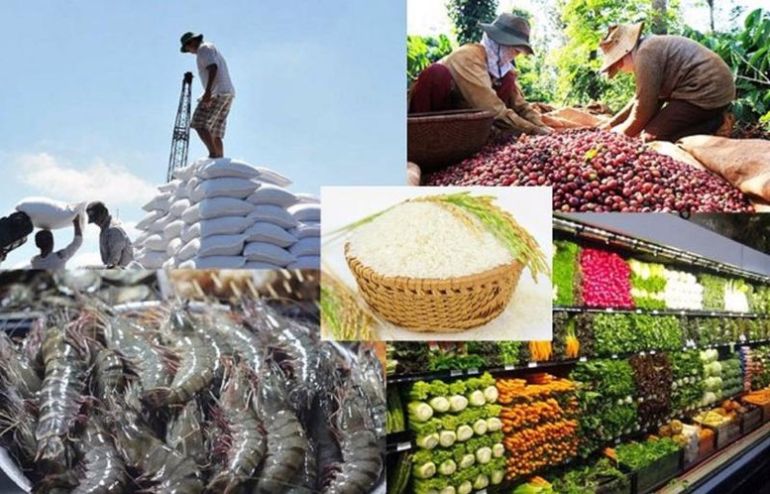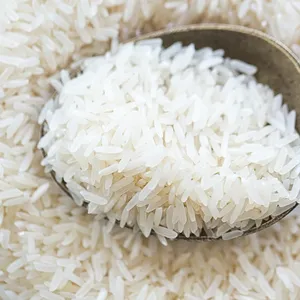 English
English
-
Tiếng Việt
-
English
-
中国人
-
日本
-
ภาษาไทย
-
한국어
-
Deutsch
-
Français
-
Русский
-
हिन्दी
- US Dollar ($)
- Vietnamese Dong (₫)
-
 Vietnam
Vietnam
-
 Afghanistan
Afghanistan
-
 Aland Islands
Aland Islands
-
 Albania
Albania
-
 Algeria
Algeria
-
 American Samoa
American Samoa
-
 Andorra
Andorra
-
 Angola
Angola
-
 Anguilla
Anguilla
-
 Antarctica
Antarctica
-
 Antigua And Barbuda
Antigua And Barbuda
-
 Argentina
Argentina
-
 Armenia
Armenia
-
 Aruba
Aruba
-
 Australia
Australia
-
 Austria
Austria
-
 Azerbaijan
Azerbaijan
-
 Bahamas The
Bahamas The
-
 Bahrain
Bahrain
-
 Bangladesh
Bangladesh
-
 Barbados
Barbados
-
 Belarus
Belarus
-
 Belgium
Belgium
-
 Belize
Belize
-
 Benin
Benin
-
 Bermuda
Bermuda
-
 Bhutan
Bhutan
-
 Bolivia
Bolivia
-
 Bonaire, Sint Eustatius and Saba
Bonaire, Sint Eustatius and Saba
-
 Bosnia and Herzegovina
Bosnia and Herzegovina
-
 Botswana
Botswana
-
 Bouvet Island
Bouvet Island
-
 Brazil
Brazil
-
 British Indian Ocean Territory
British Indian Ocean Territory
-
 Brunei
Brunei
-
 Bulgaria
Bulgaria
-
 Burkina Faso
Burkina Faso
-
 Burundi
Burundi
-
 Cambodia
Cambodia
-
 Cameroon
Cameroon
-
 Canada
Canada
-
 Cape Verde
Cape Verde
-
 Cayman Islands
Cayman Islands
-
 Central African Republic
Central African Republic
-
 Chad
Chad
-
 Chile
Chile
-
 China
China
-
 Christmas Island
Christmas Island
-
 Cocos (Keeling) Islands
Cocos (Keeling) Islands
-
 Colombia
Colombia
-
 Comoros
Comoros
-
 Congo
Congo
-
 Cook Islands
Cook Islands
-
 Costa Rica
Costa Rica
-
 Cote D'Ivoire (Ivory Coast)
Cote D'Ivoire (Ivory Coast)
-
 Croatia
Croatia
-
 Cuba
Cuba
-
 Curaçao
Curaçao
-
 Cyprus
Cyprus
-
 Czech Republic
Czech Republic
-
 Democratic Republic of the Congo
Democratic Republic of the Congo
-
 Denmark
Denmark
-
 Djibouti
Djibouti
-
 Dominica
Dominica
-
 Dominican Republic
Dominican Republic
-
 East Timor
East Timor
-
 Ecuador
Ecuador
-
 Egypt
Egypt
-
 El Salvador
El Salvador
-
 Equatorial Guinea
Equatorial Guinea
-
 Eritrea
Eritrea
-
 Estonia
Estonia
-
 Ethiopia
Ethiopia
-
 Falkland Islands
Falkland Islands
-
 Faroe Islands
Faroe Islands
-
 Fiji Islands
Fiji Islands
-
 Finland
Finland
-
 France
France
-
 French Guiana
French Guiana
-
 French Polynesia
French Polynesia
-
 French Southern Territories
French Southern Territories
-
 Gabon
Gabon
-
 Gambia The
Gambia The
-
 Georgia
Georgia
-
 Germany
Germany
-
 Ghana
Ghana
-
 Gibraltar
Gibraltar
-
 Greece
Greece
-
 Greenland
Greenland
-
 Grenada
Grenada
-
 Guadeloupe
Guadeloupe
-
 Guam
Guam
-
 Guatemala
Guatemala
-
 Guernsey and Alderney
Guernsey and Alderney
-
 Guinea
Guinea
-
 Guinea-Bissau
Guinea-Bissau
-
 Guyana
Guyana
-
 Haiti
Haiti
-
 Heard Island and McDonald Islands
Heard Island and McDonald Islands
-
 Honduras
Honduras
-
 Hong Kong S.A.R.
Hong Kong S.A.R.
-
 Hungary
Hungary
-
 Iceland
Iceland
-
 India
India
-
 Indonesia
Indonesia
-
 Iran
Iran
-
 Iraq
Iraq
-
 Ireland
Ireland
-
 Israel
Israel
-
 Italy
Italy
-
 Jamaica
Jamaica
-
 Japan
Japan
-
 Jersey
Jersey
-
 Jordan
Jordan
-
 Kazakhstan
Kazakhstan
-
 Kenya
Kenya
-
 Kiribati
Kiribati
-
 Kosovo
Kosovo
-
 Kuwait
Kuwait
-
 Kyrgyzstan
Kyrgyzstan
-
 Laos
Laos
-
 Latvia
Latvia
-
 Lebanon
Lebanon
-
 Lesotho
Lesotho
-
 Liberia
Liberia
-
 Libya
Libya
-
 Liechtenstein
Liechtenstein
-
 Lithuania
Lithuania
-
 Luxembourg
Luxembourg
-
 Macau S.A.R.
Macau S.A.R.
-
 Macedonia
Macedonia
-
 Madagascar
Madagascar
-
 Malawi
Malawi
-
 Malaysia
Malaysia
-
 Maldives
Maldives
-
 Mali
Mali
-
 Malta
Malta
-
 Man (Isle of)
Man (Isle of)
-
 Marshall Islands
Marshall Islands
-
 Martinique
Martinique
-
 Mauritania
Mauritania
-
 Mauritius
Mauritius
-
 Mayotte
Mayotte
-
 Mexico
Mexico
-
 Micronesia
Micronesia
-
 Moldova
Moldova
-
 Monaco
Monaco
-
 Mongolia
Mongolia
-
 Montenegro
Montenegro
-
 Montserrat
Montserrat
-
 Morocco
Morocco
-
 Mozambique
Mozambique
-
 Myanmar
Myanmar
-
 Namibia
Namibia
-
 Nauru
Nauru
-
 Nepal
Nepal
-
 Netherlands
Netherlands
-
 New Caledonia
New Caledonia
-
 New Zealand
New Zealand
-
 Nicaragua
Nicaragua
-
 Niger
Niger
-
 Nigeria
Nigeria
-
 Niue
Niue
-
 Norfolk Island
Norfolk Island
-
 North Korea
North Korea
-
 Northern Mariana Islands
Northern Mariana Islands
-
 Norway
Norway
-
 Oman
Oman
-
 Pakistan
Pakistan
-
 Palau
Palau
-
 Palestinian Territory Occupied
Palestinian Territory Occupied
-
 Panama
Panama
-
 Papua new Guinea
Papua new Guinea
-
 Paraguay
Paraguay
-
 Peru
Peru
-
 Philippines
Philippines
-
 Pitcairn Island
Pitcairn Island
-
 Poland
Poland
-
 Portugal
Portugal
-
 Puerto Rico
Puerto Rico
-
 Qatar
Qatar
-
 Reunion
Reunion
-
 Romania
Romania
-
 Russia
Russia
-
 Rwanda
Rwanda
-
 Saint Helena
Saint Helena
-
 Saint Kitts And Nevis
Saint Kitts And Nevis
-
 Saint Lucia
Saint Lucia
-
 Saint Pierre and Miquelon
Saint Pierre and Miquelon
-
 Saint Vincent And The Grenadines
Saint Vincent And The Grenadines
-
 Saint-Barthelemy
Saint-Barthelemy
-
 Saint-Martin (French part)
Saint-Martin (French part)
-
 Samoa
Samoa
-
 San Marino
San Marino
-
 Sao Tome and Principe
Sao Tome and Principe
-
 Saudi Arabia
Saudi Arabia
-
 Senegal
Senegal
-
 Serbia
Serbia
-
 Seychelles
Seychelles
-
 Sierra Leone
Sierra Leone
-
 Singapore
Singapore
-
 Sint Maarten (Dutch part)
Sint Maarten (Dutch part)
-
 Slovakia
Slovakia
-
 Slovenia
Slovenia
-
 Solomon Islands
Solomon Islands
-
 Somalia
Somalia
-
 South Africa
South Africa
-
 South Georgia
South Georgia
-
 South Korea
South Korea
-
 South Sudan
South Sudan
-
 Spain
Spain
-
 Sri Lanka
Sri Lanka
-
 Sudan
Sudan
-
 Suriname
Suriname
-
 Svalbard And Jan Mayen Islands
Svalbard And Jan Mayen Islands
-
 Swaziland
Swaziland
-
 Sweden
Sweden
-
 Switzerland
Switzerland
-
 Syria
Syria
-
 Taiwan
Taiwan
-
 Tajikistan
Tajikistan
-
 Tanzania
Tanzania
-
 Thailand
Thailand
-
 Togo
Togo
-
 Tokelau
Tokelau
-
 Tonga
Tonga
-
 Trinidad And Tobago
Trinidad And Tobago
-
 Tunisia
Tunisia
-
 Turkey
Turkey
-
 Turkmenistan
Turkmenistan
-
 Turks And Caicos Islands
Turks And Caicos Islands
-
 Tuvalu
Tuvalu
-
 Uganda
Uganda
-
 Ukraine
Ukraine
-
 United Arab Emirates
United Arab Emirates
-
 United Kingdom
United Kingdom
-
 United States
United States
-
 United States Minor Outlying Islands
United States Minor Outlying Islands
-
 Uruguay
Uruguay
-
 Uzbekistan
Uzbekistan
-
 Vanuatu
Vanuatu
-
 Vatican City State (Holy See)
Vatican City State (Holy See)
-
 Venezuela
Venezuela
-
 Virgin Islands (British)
Virgin Islands (British)
-
 Virgin Islands (US)
Virgin Islands (US)
-
 Wallis And Futuna Islands
Wallis And Futuna Islands
-
 Western Sahara
Western Sahara
-
 Yemen
Yemen
-
 Zambia
Zambia
-
 Zimbabwe
Zimbabwe
DNHN - The Vietnamese agriculture sector has made significant progress in recent years, and currently, the goal is to boost agricultural exports to reach $54 billion.

With the potential and efforts of Vietnam's agriculture sector, the goal of achieving $54 billion in agricultural exports is entirely feasible. (Ảnh: Internet)
According to the Ministry of Agriculture and Rural Development, in the first six months of 2024, the trade surplus of the agriculture sector reached approximately $8.28 billion, a 62.4% increase compared to the same period in 2023. At the same time, the GDP growth of the agriculture, forestry, and fisheries sector reached 3.34%, contributing 5.36% to the total added value growth of the economy. These achievements are not only a solid foundation but also a crucial motivation for driving the agriculture sector's breakthrough in the second half of 2024.
With a positive outlook for 2024, Vietnam's agricultural, forestry, and fishery export turnover is projected to reach between $54 and $55 billion. Currently, there are seven products and product groups surpassing the $1 billion mark in export value, including coffee, rubber, rice, fruits and vegetables, cashew nuts, shrimp, wood and wood products.
Among them, rice and cashew nuts have shown growth in both volume and value compared to the same period in 2023. Specifically, rice exports reached 4.68 million tons (up 10.4%), valued at $2.98 billion (up 32%); cashew nuts reached 350,000 tons (up 24.9%), valued at $1.92 billion (up 17.4%). For coffee, despite a 10.5% decrease in volume, the average export price increased by 50.4%, resulting in an export value of $3.22 billion, up 34.6%.
In recent years, Vietnam's agriculture sector has made significant progress and achieved important milestones. Agricultural output has increased significantly, meeting domestic demand and providing a large supply for the export market. This progress is driven by the adoption of advanced technologies, the development of high-quality crop varieties, and the efficient use of fertilizers and pesticides.
Additionally, the productivity and quality of agricultural products have been significantly improved thanks to these innovations. The agricultural infrastructure system has also been upgraded, enhancing the capacity for transportation and preservation of agricultural products. These achievements not only serve as a strong motivation for the sustainable development of Vietnam's agriculture sector but also contribute positively to the national economy.
Vietnam possesses an advantage in the diversity of agricultural products, from staple items like rice, coffee, cashew nuts, and rubber to various fruits and vegetables, seafood, and industrially processed agricultural products. The quality of Vietnamese agricultural products is increasingly recognized by international markets, thanks to compliance with high standards of food safety and environmental sustainability.
Notably, Vietnam has signed numerous free trade agreements with other countries and regions around the world, opening up opportunities for exporting agricultural products to major markets such as Europe, the United States, Japan, South Korea, and China. These efforts not only help boost the agricultural economy but also contribute to improving the livelihoods of rural people and promoting sustainable development for Vietnam's agriculture sector.
To enhance the productivity and quality of agricultural products, we need to continue promoting research and the application of advanced technologies in agriculture. Increasing the use of organic and microbial fertilizers, and implementing clean and safe production processes are essential steps to ensure productivity and product quality.
Building the brand of Vietnamese agricultural products is also a crucial priority. Investing in brand promotion through activities such as exhibitions, trade fairs, and media campaigns will help elevate the value and reputation of Vietnamese agricultural products in the international market.
To achieve this, strengthening cooperation and information sharing is extremely important. Enhancing links with agricultural associations, export enterprises, and relevant agencies to share market information, export regulations, and new business opportunities will help optimize export potential.
Simultaneously, investing in transportation infrastructure and technology is necessary to improve the preservation and processing systems for agricultural products. This ensures that products maintain high quality when reaching international markets.
Finally, training and improving human resource capacity is a decisive factor. Investing in training farmers, agricultural experts, and related personnel, enhancing knowledge in agricultural management, quality standards, and exports will help Vietnam's agriculture sector develop sustainably and compete in the international market.
With the potential and efforts of Vietnam's agriculture sector, the goal of achieving $54 billion in agricultural exports is entirely feasible. This not only brings strong economic development opportunities for Vietnam but also contributes to improving the livelihoods of rural people, creating jobs, and attracting investment into the agriculture sector.
Nghe Nhan







